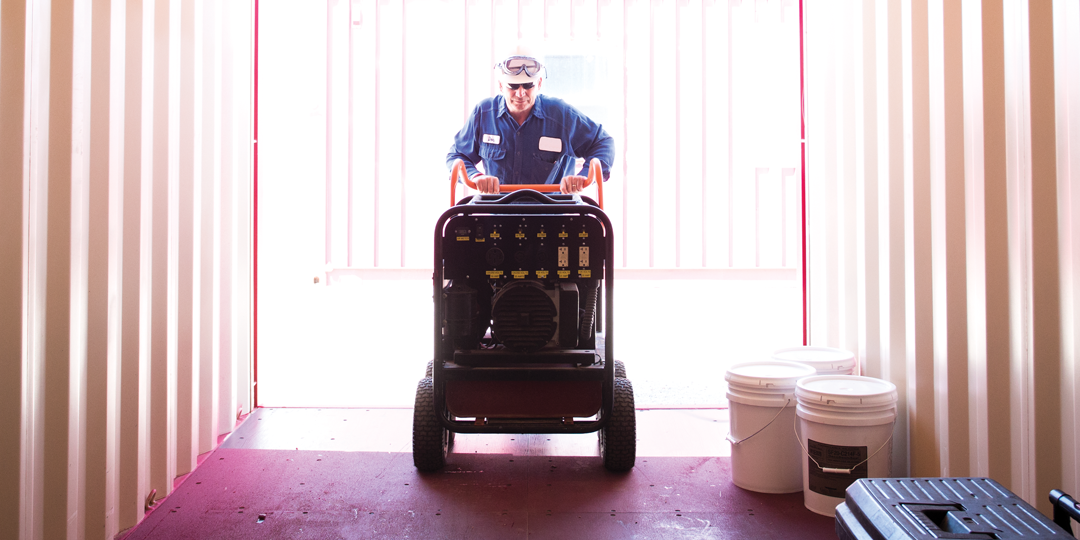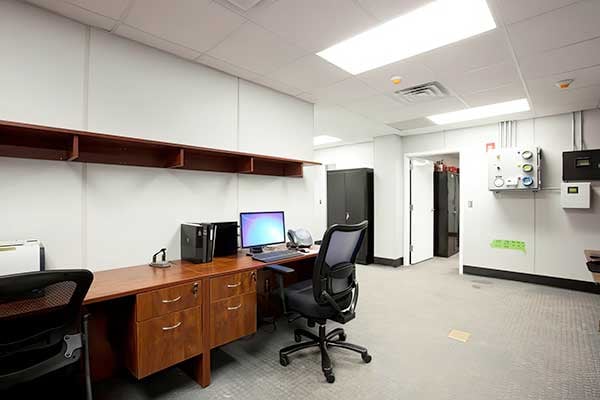Container Storage Options – Design an Efficient Jobsite Command Hub

Construction sites turn into disasters so quickly it's almost funny. Except it's not funny when you can't find anything.
Tools everywhere. Materials piled in random spots. Three people looking for the same wrench. You know the drill.
Cargo containers solve this mess. They're tough, you can move them around, and you can set them up however works best. Traditional storage? Doesn't even come close.
Here's what you can actually do with shipping containers.
Understanding Your Container Storage Options
Cargo containers are basically big metal boxes for shipping stuff worldwide. About 79% of global cargo moves in these things. That's not some random number I'm throwing at you. It means they work.
For jobsite storage, you've got real choices. Standard containers come in 20 and 40-foot lengths. There's also a 10-foot option if you're tight on space. All of them are 8 feet wide. Steel construction handles whatever weather throws at them. Rain, snow, dust, heat. Doesn't matter.

You can modify containers for storage, offices, even homes if you want to get creative. Average lifespan runs around 13 years in active use. That's solid value. There are over 92,000 container storage facilities worldwide, so getting service and delivery is pretty straightforward no matter where you're working.
Sizes and Configurations That Work
Size matters here. Pick too small and you're playing Tetris with everything. Go too big and you're wasting money on empty space.
The 8' x 10' models work great for smaller sites or when you're organizing specific trades. Doors swing open on one end, 78 inches both ways. Split door design means you open one side or both. Whatever you need in the moment.
Bump up to 20 or 40-foot containers and things get interesting. These bigger units can have doors on one end or both. Think about how different trades need different things. Conduit comes in 10-foot lengths. Pipes show up in 20 or 21-foot sections.

Get a 40-foot container with doors on both ends, throw in an inner wall, and boom. Plumbing supplies on one side, electrical on the other. Everything organized instead of that jumbled nightmare nobody wants to deal with.
Security Features That Actually Protect Your Stuff
Leaving expensive tools overnight on a jobsite? Risky move. Cargo containers beat open sheds or tarps by a mile.
Steel construction is your first defense. Can't punch through it. Can't pry panels loose. Simple as that. Weatherproof design keeps out rain and dust, but also keeps out people who have no business being there.
You need good locks though. Not every lock fits container doors right. Get locks sized specifically for these units. Order them keyed-alike if you're running multiple containers. Fewer keys in your pocket, better security across the site.

Around 63% of container storage units worldwide have climate control. If you're storing valuable equipment or materials that hate temperature swings, worth thinking about.
Customization and Modifications for Your Needs
Standard containers work fine for basic stuff. But customization is where things get cool.
Shelving turns empty boxes into actual organized storage. Three-tier shelving holds 550 pounds per shelf or 1,100 pounds per bracket. Still got 32 inches of floor space underneath for heavy items that won't fit on shelves.

Pipe racks make long materials way easier to manage. No more pipes leaning against walls or lying across the floor tripping people. Everything stays put. Floor space opens up for parts, tools, equipment.
Some companies add bike racks to containers. You can fit 25 bikes in a 20-footer by hanging them from the wheels. Not many construction workers bike to sites, but hey, options exist.
Windows, insulation, climate control, interior walls with doors? All doable. Modifications depend on what you need and what you want to spend. Companies doing this work can give you quotes based on your setup.
Indoor vs Outdoor Storage Considerations
Where you put containers changes how you use them. Outdoor is easy. Roll them onto the property, position where needed, done. Steel construction and weatherproof design handle whatever nature throws at them.
Stacking containers saves space in storage yards. Matters if you're juggling inventory across multiple sites or need a central spot for equipment. Modular design means you stack them safely and grab different units as needed.
Indoor storage in a warehouse gives extra protection. Climate stays steadier. Security might be tighter depending on the building. But most jobsites don't have that luxury. Good news? Outdoor works fine for almost everything.
For certain materials, climate-controlled containers solve temperature and humidity headaches. The global storage market is growing about 5% annually through 2027. Climate control is a big reason why. People want protection for sensitive stuff and inventory.
Transportation and Delivery Logistics
Containers move around easily. That's the point. Need storage at one site this month and somewhere else next month? Not a problem.
Transportation companies handle delivery with specialized trucks. Pretty simple process. Load container, transport to your site, unload where you want it. Job finishes, they pick it up and move it wherever.
Delivery service depends on the company and where you are. Some do same-day or next-day. Others need more lead time for scheduling trucks and drivers. Call ahead and ask about routes, pricing, and how long transit takes in your area.

Renting? Company usually handles everything. They bring it, you use it, they take it. Lease, lease-to-own, or buy outright means you own it and figure out transport yourself or hire freight companies when needed.
Cost Considerations and Pricing
Money talks. Container storage runs from cheap to expensive depending on size, condition, and what you add to it.
Rental costs vary by where you are and what size you need. Basic 10-foot unit costs less than a modified 40-footer with shelving, climate control, and custom features. Get quotes from a few companies to compare pricing and service.
Used containers cost way less than new but work just as well. Steel holds up even after years of use. Check for rust, dents, and structural problems before you commit though.
Buying outright means higher upfront cost but no rental fees. For long-term needs, purchasing makes sense financially. Renting works better for temporary projects or when you're not sure how long you'll need it.
Don't forget delivery and pickup. Some companies include transport in the price. Others charge separately. Ask upfront so you're not surprised when the invoice shows up.
Setting Up Your Jobsite Command Hub
Combine storage containers with mobile offices and you've got an efficient setup. One end for planning and paperwork. Other end stores tools and materials. Everything's right there instead of scattered everywhere.
Mobile offices can have plan tables, desks, lockers, tool cribs, cabinets. Add climate control and you've got comfortable space for breaks and meetings. Fast walls with doors make dividing spaces quick.

Maybe you need one office but storage for multiple trades. Or several small offices with attached or separate storage. Container storage gives you flexibility. Set it up however works for your operation.
Cluster units close together to keep the footprint small. Just need enough room to position them and remove them when you're done. Companies doing container delivery can help plan layout and logistics for your specific site.
For crew comfort, think about adding heat and air to break areas. Working in extreme temps is rough. Give people a spot to warm up or cool down and they'll appreciate it. Some office containers already have HVAC installed, which saves modification costs.
Frequently Asked Questions
What types of cargo containers are available for storage? Standard sizes are 10, 20, and 40 feet long, all 8 feet wide. Basic units or modified versions with shelving, climate control, custom features.
How secure are cargo containers for storage? Very. Steel construction stops break-ins. Add proper locks and your stuff stays protected.
Can cargo containers be modified for specific storage needs? Yeah. Companies add shelving, pipe racks, windows, insulation, walls, HVAC. Depends what you need and budget.
Where can I buy or rent cargo containers for storage? Contact container companies in your area. Most offer rent, lease, lease-to-own, and purchase. Check reviews and customer service first.
How much does it cost to rent a cargo container? Pricing varies by size, location, rental time. Get quotes from multiple places. Ask if delivery and pickup are included.
Are cargo containers weatherproof for outdoor storage? Yes. Steel keeps out rain, dust, weather. They're built for outdoor use.
What sizes do cargo containers come in? Common lengths are 10, 20, and 40 feet. All 8 feet wide. Height usually 8.5 feet.
Can I use cargo containers for long-term storage? Definitely. They last 13 years or more in active use. Stationary storage? Even longer with basic maintenance.
How do I maintain a cargo container used for storage? Check for rust and fix it quick. Keep drainage clear. Check locks and hinges. Basic stuff keeps them working for years.
Are there portable container storage options? That's the whole point. Move containers between sites as needs change. Delivery companies handle logistics.
Making Container Storage Work for You
Container storage beats traditional methods. More durable, more secure, way more flexible. Simple storage or complete command hub, containers adapt.
Figure out what you're storing, how much space you actually need, what modifications help. Contact local companies, compare prices and service, schedule delivery early.
Construction sites get messy. Smart container storage fixes that. Keeps everything organized and easy to find. Crew works better. Stuff stays secure. Job finishes, move everything without drama.





